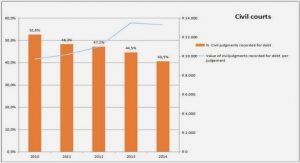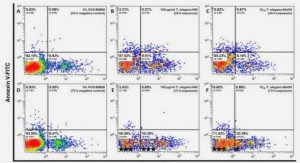Get Complete Project Material File(s) Now! »
UNDERSTANDING “PLANNING AND POWER”
In order to conceptualize contemporary planning theories, specifically within the context of power relations, social rationality and the more recent “communicative turn in planning” (Healey), it is imperative to at least look at: (i) the critique on modernist/rational planning; and (ii) the influences (and thoughts) which had led to the unfolding contemporary postmodern planning theories.
The development of planning theory in most parts of the western world was largely dominated by modernist/rational planning theories and the application of the scientific rational planning model that emerged in the UK and the USA during the mid 1900s. The concept of rationality in planning developed through empiricism (the application of experience) and rationalism (the exercise of reasoning) (Muller 1994:7). As ‘a type of planning’ it was largely concerned with the scientific analysis and systems analysis in the planning process (Muller 1994:7; Stuart 1970: 1-5; Cuthbert 1985:89-90; and Sewell and Coppock 1977:1). Although this scientific approach broadened the base of planning methodology and elevated the ‘professional scientific status’ of the urban planning profession in most parts of the world, it over-emphasised the scientific, autocratic and undemocratic approach to planning, and the power of authority (and science). This scientific focus not only diminished the social focus of planning, but it resulted in a scientific rigidity and ‘powerful rationality’ that was widely criticised and resisted by anti-planners3. During the second half of the 1900s, the rational planning model was increasingly criticized for not directing and explaining planning activity satisfactorily4.
Beauregard (1996: 227) argues that the disintegration of the modernist planning project, had led to the “centrifugal disintegration” of planning theory – “…without a corresponding refocusing of knowledge around the social theories and a broadening of the planning debate”. Taylor (1998); Yiftachel and Huxley (2000); Watson (2001); Allmendinger (2001); and Hillier (2002) however argue that the resistance and critique on the instrumental rationality and modernism in general led to numerous counter-positions in planning theory such as the social turn in planning. During the sixties and seventies, a number of social movements developed in reaction to the excessively narrow emphasis on physical and economic development and the neglect of broader social development and social wants and needs5, viz: the Civil Rights Movement of the 1960s; and the proponents of Advocacy Planning6, Radical Planning, Equity Planning7, Marxist planning8, and the Basic Needs Approach9. This reaction to the modernist project with its focus on instrumental rationality and neglect of the ‘human urbanus’10 (in most parts of the UK, USA and Western Europe), had led to a new social awareness and a new focus on a wider remit of social issues11. This critique on modernist planning and the subsequent quest for new forms of planning is also associated with the “postmodern turn” during the same period (see Allmendinger 2001). According to Sim (1998:3), the postmodern turn is associated with amongst others; a commitment to cultural progress; the emancipation of mankind versus economic want and political oppression; the anti-authoritarian mind set; a new form of scepticism about authority, wisdom, cultural and political norms; the rejection of structuralism and its methods and also the ideological assumption that lies behind it.
CONTEXTUALISING THE SOCIAL FABRIC IN THE LIFEWORLD
Although this study primarily took a Foucauldian viewpoint on the study of power relations as will be discussed in later paragraphs, it is believed that these power relations should be studied, also within the context of the social nexus and the web of social relations (and powers). Within the context of social/power relations, Habermas distinguishes between communication (which is associated with normal talk) and “communicative action” which is an action “oriented to reach common understanding”, an action associated with influences, strategic action and therefore power relations. Habermas further refers to the two concepts of “lifeworld” and “systems”. The “lifeworld” can briefly be defined as the social/cultural world or the realm of personal relations; while “the systems” could be e.g. the capitalist economy or the bureaucratic administration. These systems, which form the context within which the lifeworld operates, can suppress the lifeworld, creating conflict, distorting communication or communicative action – resulting in a power clash between the lifeworld and systems. The interactive flow of knowledge, process of communication, and communicative (inter) action, negotiation, speech act, consensus building and negotiations, narratives at all levels, discourses and relations between “different actors in the lifeworld” (Habermas) provides a new/another perspective on the complex social nexus and the complex web of social relations in which we live our lives (Healey (1997: 57 -58). According to Healey (1997: 58), this complex web of social relations (hereafter referred as “the social web”), has points of intersection or nodes which are normally the common spaces of the institutions, associations etc or “the arenas where systems of meaning, ways of acting and ways of valuing are learned, transmitted and sometimes transformed”. It is the dynamics within these social webs that “create” different forms of power and power relations. Thomas Wartenburg refers to the concept of a “social alignment” that “provides a way of understanding the ‘field’ that constitutes a situated power relationship as a power relationship”. According to Wartenburg, this social alignment (within the context of power relations) can only be created if the coordinated practice of the social agents (which form the alignment) are so comprehensive that the social agents facing the alignment encounter it as having control over certain things he or she might need or desire (see Foucault in Gutting edt.1994). This argument further indicates that power is distributed through a complex social web and mediated by social alignments (Foucault in Gutting edt.1994). Kogler (1996: 235) also states that power is a system of social networks that are founded as such within the ‘social and historical lifeworld’.
This relationship between social relations and power is also underscored by Antony Giddens’ structuration theory which amongst others states that we as humans or social beings live through culturally bound structures of rules and resource flows, and in, and through dense and diffuse sets of relational webs, each one of which presents an active context of our lives. According to Giddens, these webs are continuously shaped by structuring forces – also referred to as the power(full) forces all around us (see Foucault in Gutting edt. 1994). Based on the foregoing discussion and the works of Habermas, Healey, Wartenburg, Kogler, Giddens, and Hillier, it is evident that the dynamic and interacting social relations (and communicative action) are, not only associated with power relations, but also responsible for “creating” specific power relations. During the late nineties and early 2000, various planners in the academic field, such as Forester, Hoch, Healey, Flyvbjerg, Lapintie, Hillier, Allmendinger, and Watson explored these social relations in an attempt to better understand the dynamics of it, as well as its relationship with power relations. Although Habermas was “somewhat silent” on the issues of power, Foucault provided “power(full)” viewpoints on the social nexus within which Habermas’ communicative action is exercised .
CHAPTER 1 RATIONALE AND SCOPE OF THE STUDY
CHAPTER 2 THEORETICAL FRAMEWORK FOR ANALYSIS
2.1 Introduction
2.2 Understanding “planning and power”
2.3 Contextualising the social fabric in the lifeworld
2.4 Machiavelli and Foucault on power
2.5 Power and rationality – and the power of (communicative) rationality
2.6 A framework for analysis
CHAPTER 3 RESEARCH METHODOLOGY
3.1 Emerging research methodologies within “the postmodern”
3.2 The practice movement, phronesis and power
3.3 Exploring the practice and powers in the City of Tshwane through naturalistic case study research
3.4 Analysing and theorising the case study data
3.5 Research integrity, validity and trustworthiness
3.6 The narrative: research tool and story
CHAPTER 4 THE CONTEXTUAL REALITIES THAT INFORMED, SHAPED AND FRAMED THE TRANSFORMATION OF URBAN PLANNING IN THE MUNICIPALITIES OF THE GREATER PRETORIA/TSHWANE REGION DURING THE PERIOD 1992 TO 2002
4.1 Setting the scene
4.2 The patriarchal planning system in South Africa
4.3 Community participation
4.6 The “sustainable” environmental agenda
4.7 Urban planning and management
4.8 Concluding remarks
CHAPTER 5 A NARRATIVE ON THE TRANSFORMATION OF URBAN PLANNING IN THE MUNICIPALITIES OF THE GREATER PRETORIA REGION (NOW TSHWANE) DURING THE PERIOD 1992 TO 2002
5.1 The City of Tshwane: Opportunity from disaster
5.2 Utopia and science f(r)iction
5.3 A new (dis)course on urban planning in the City of Pretoria
5.4 Some things/people will never change
5.5 The dawn of ‘the new South Africa’
5.6 A new planning model embedded in holism
5.7 “Cherish the heart of the city”
5.8 Three cities – one plan(ner)
5.9 The more things change; the more they stay the same
5.10 Planners rising from the ashes
5.11 The IDP process in practice: confusion, conflict and critique
5.12 “The plan is coming together”
5.13 The IDP takes a nose dive
5.14 “Quite frankly, Mike, we’ve had enough”
5.15 “Making the ship turn”
5.16 The rebirth of Tshwane
CHAPTER 6 REFLECTING ON THE TRANS[FORMATION], THE TRANS[FORMED] AND TRANS[FORMING] URBAN PLANNING SYSTEM IN THE CITY OF TSHWANE
CHAPTER 7 CONCLUSION






